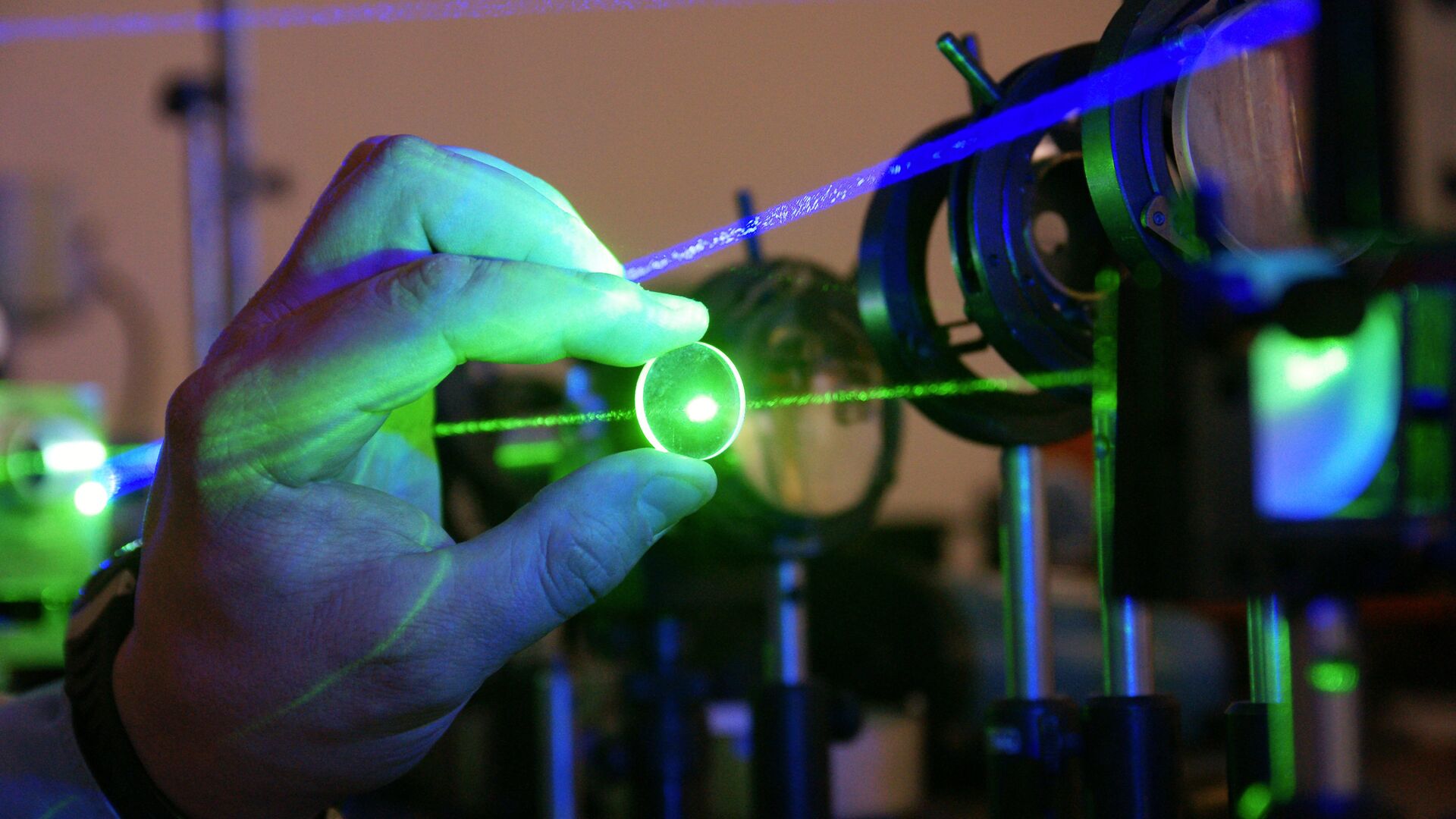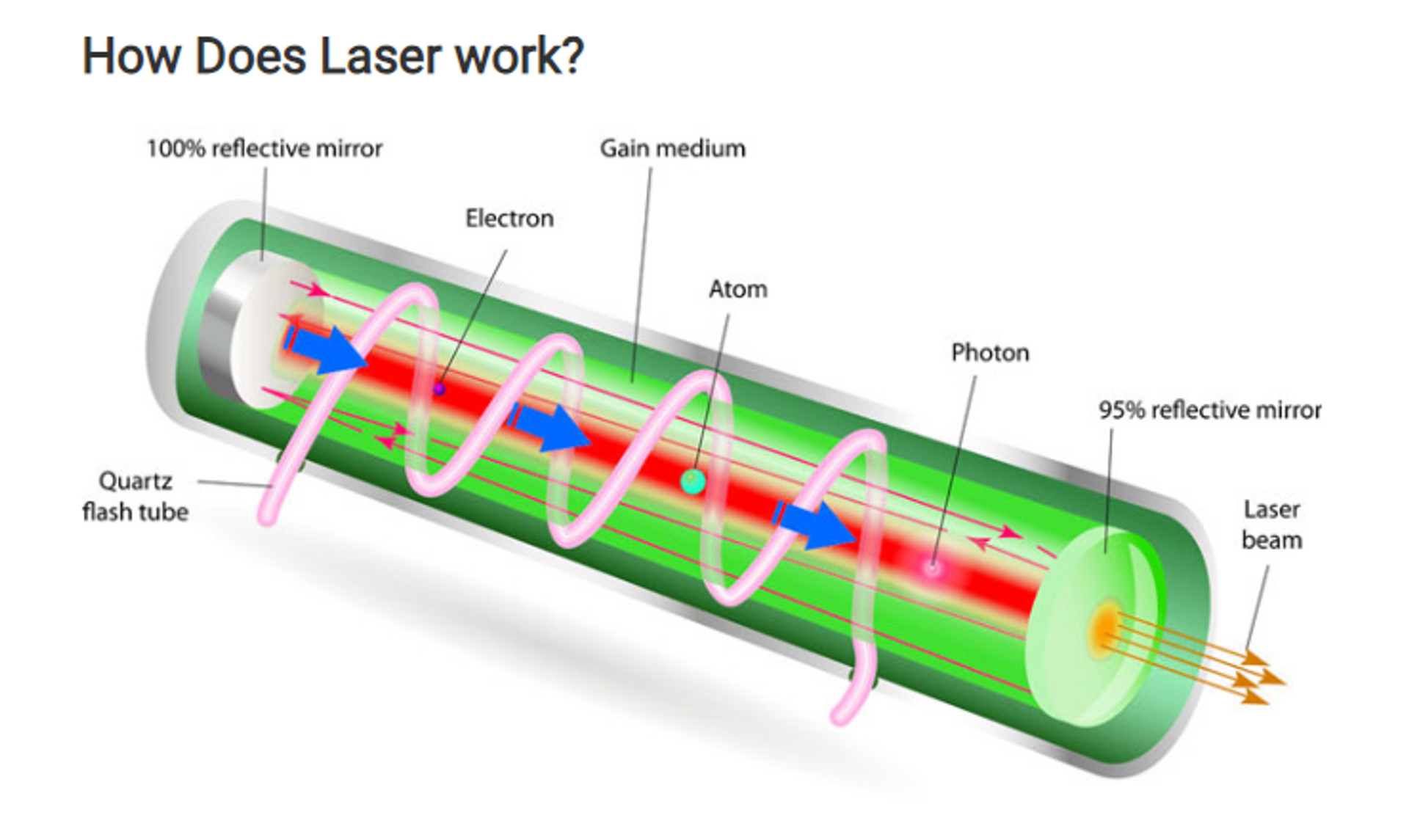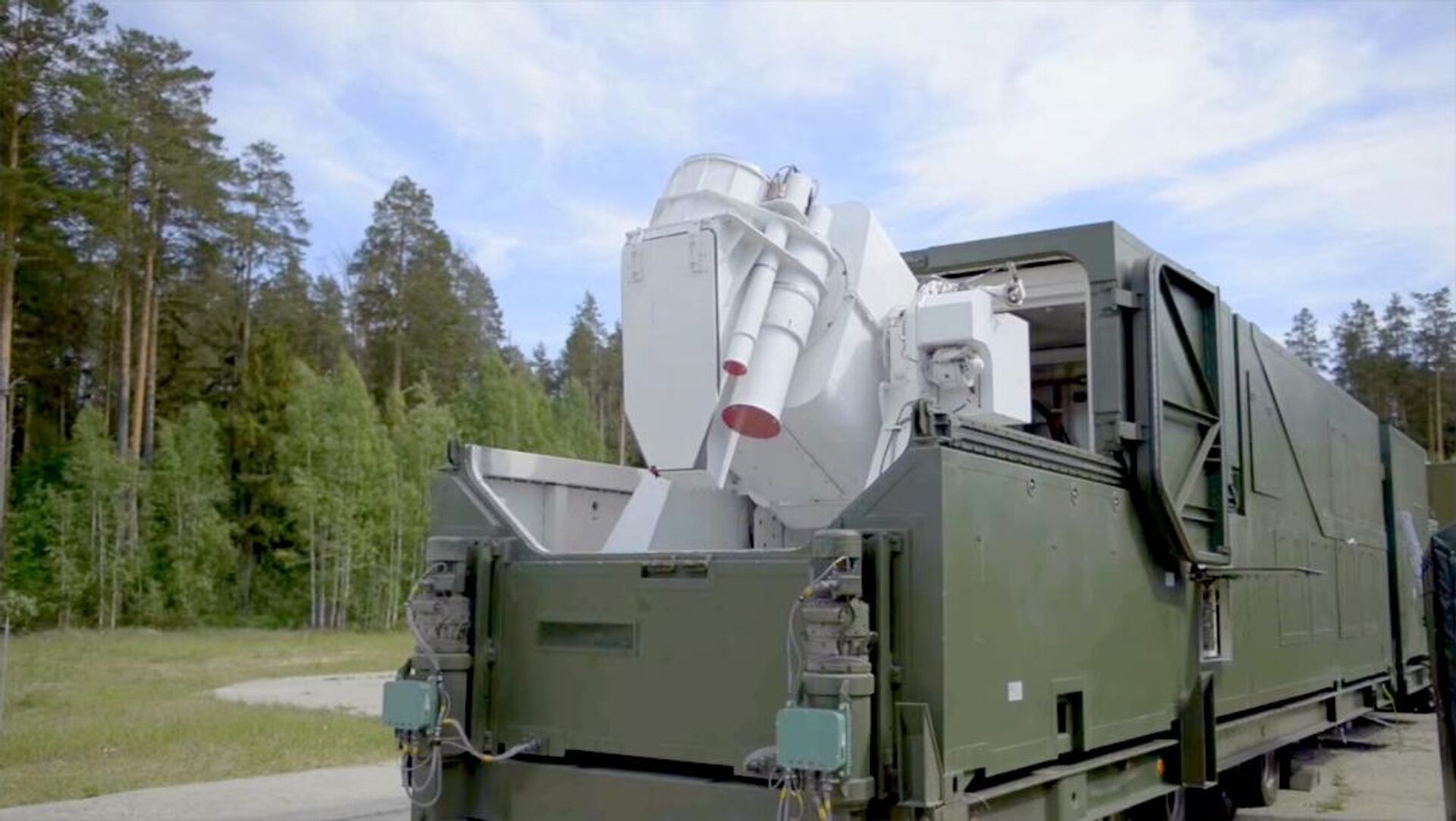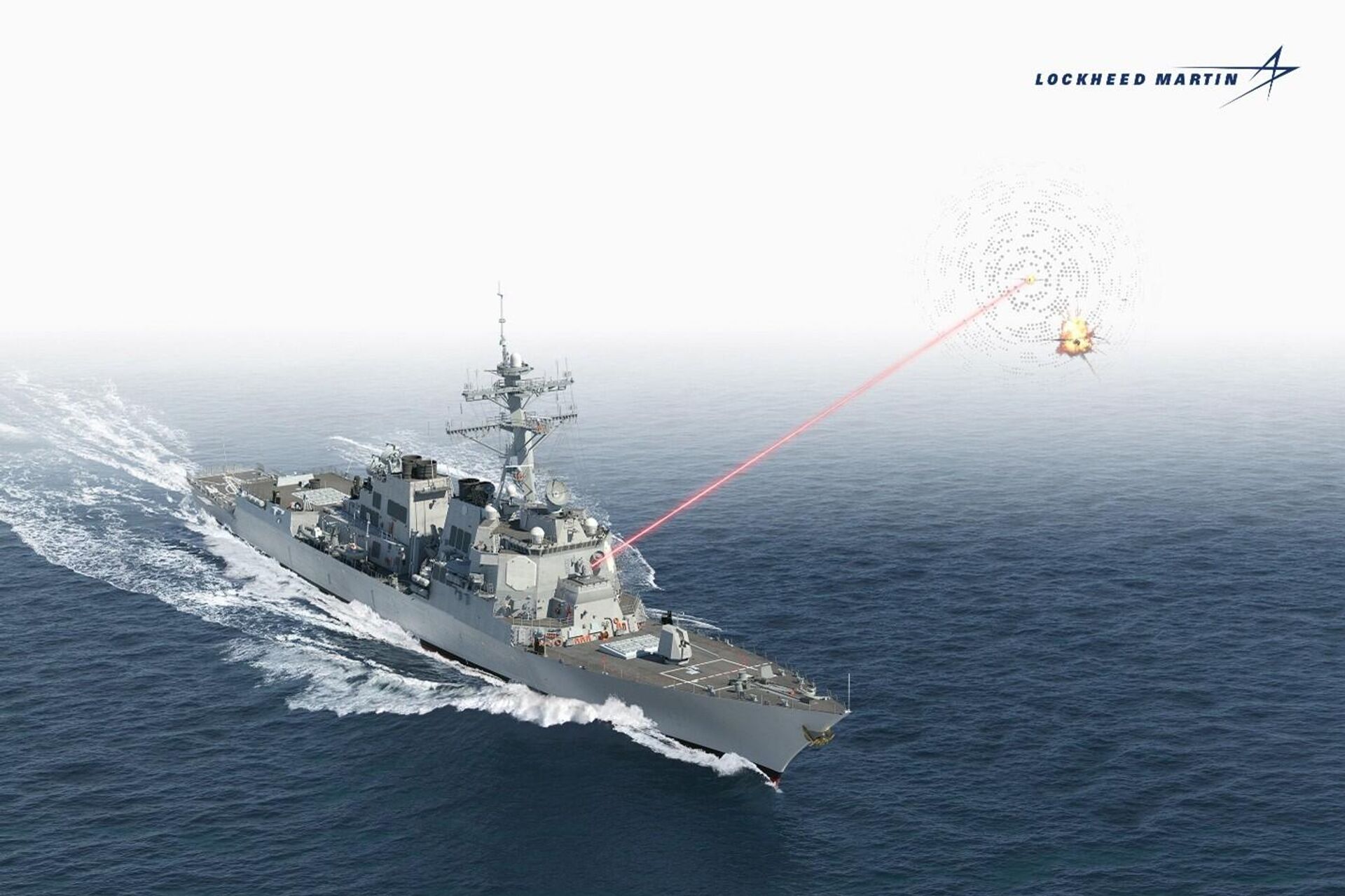https://sputnikglobe.com/20230927/how-laser-weapons-work-1113652558.html
How Laser Weapons Work
How Laser Weapons Work
Sputnik International
Laser weapon systems mark an ingenious shift in modern warfare, with continuous research and warfare prospects shaping their deployment. Integrating laser weapons poses challenges, from technical to strategic. Yet progress is evident, as armed forces worldwide are pursuing their development for military integration.
2023-09-27T13:05+0000
2023-09-27T13:05+0000
2023-09-27T13:34+0000
military
university of new mexico (unm)
sputnik
us navy
mcdonnell douglas (boeing) f/a-18c hornet
uss ponce
a-60
https://cdn1.img.sputnikglobe.com/img/104323/39/1043233925_0:160:3073:1888_1920x0_80_0_0_686550cb0bdbefcde4e407cbec5c481e.jpg
The discovery of laser technology dates back to the late 1950s, but it is multifarious. A range of military applications for lasers has been identified, albeit with several limitations constraining their operational deployment.In contemporary times, armed forces in numerous nations regularly employ extensive laser equipment, including range finders and designators, says Professor Bahman Zohuri, a laser expert at the Department of Electrical and Computer Engineering at the University of New Mexico.The laser expert explained that in several countries, efforts are underway to develop innovative laser weaponry concepts tailored to meet stringent, yet finely tuned, military specifications. The unique attributes of a designated target serve as a fundamental guide in crafting the design of each laser weapon system. Laser-based weaponry demands precision in its application, contingent upon the nature of the intended target. A high-energy laser with a power output measuring in the megawatts is imperative to effectively counter robust adversaries like airplanes, helicopters, missiles, or tanks. Such a caliber of laser delineates it as a bona fide anti-material weapon, adept at delivering decisive blows. Conversely, when aiming to incapacitate or impair sensitive electro-optical or sensor systems, the choice pivots towards a low-energy laser, finely tuned to the target sensor's frequency spectrum.Sputnik explains the laser phenomenon, highlighting what it is made of, how it became weaponized, what makes it different from other weapon systems, and several other pertinent aspects.What is a Laser?A laser, which stands for "Light Amplification by Stimulated Emission of Radiation," is a device that produces a highly concentrated, coherent, and monochromatic beam of light. This is achieved through a process known as stimulated emission. Through current-induced excitation, photons or light particles generate energy in the form of concentrated light. This concentrated light merges into a defined beam, thereby giving rise to the phenomenon known as a laser beam.Science Behind Laser WeaponsIn light emission, lasers hold a unique status as an artificial innovation. In stark contrast to naturally occurring light sources, the source of lasers lies in human-engineered processes. The hallmark of lasers lies in their capacity to project a tightly focused beam of light, characterized by a striking uniformity in wavelength among all constituent waves.Laser technology encompasses a diverse range of mediums, which can be characterized as solid, liquid, or gaseous. In high-energy laser applications, molecular gases are often the medium of choice.At the core of laser functionality lies the synchronized propagation of light waves, wherein their peaks harmoniously align. This fundamental trait underpins the extraordinary qualities of laser beams: their exceptional narrowness, luminosity, and the ability to focus precisely on a minute area.A laser is distinguished by its capacity to emit a concentrated stream of electromagnetic waves, displaying perfect alignment in frequency, phase, and directional trajectory – a state known as coherence. Fundamentally, the luminous potency of a laser is boundless, yet its actual capacity hinges on the dimensions of the laser apparatus and the intrinsic attributes of the medium from which the organized light emanates, according to former MIT nuclear physicist Kosta Tsipis.The principle behind lasers lies in activating atoms to an elevated energy state. This state of heightened energy, known as "excitation," can be triggered by a brief exposure to light, controlled atom collisions, or the infusion of an electrical charge.When an atom at a "ground state" (low energy level) absorbs a substantial amount of energy, it enters an "excited state" (high energy level). Once excited, atoms naturally revert to their lower-energy ground state. This transition releases excess energy in the form of a photon, which is a fundamental unit of light.By directing additional energy towards an already stimulated atom, it reverts to a lower-energy state, emitting two identical photons characterized by matching color, energy level, and trajectory. A laser's functionality is intricately linked to the unique interplay between photons and matter. When a photon released by one excited molecule collides with another molecule in the same excited state, the second molecule can emit an additional photon with matching phase and frequency. This sets off a chain reaction, as both photons trigger similar emissions from other molecules. This leads to a rapid increase in identical photons moving through the collection of molecules.Components of a Laser Weapon"Stimulated emission" serves as the mainstay of laser operation. To develop the requisite essentials for this phenomenon, lasers encompass three vital functional components, each playing a crucial role in their overall design. These include:Source: Coherent.comSource: Coherent.comLaser Targeting and Tracking SystemsA laser targeting system guides a laser ray with unparalleled accuracy toward a predefined target. This feat is accomplished by seamlessly integrating sensors, optical components, and intricate computational algorithms, resulting in pinpoint accuracy.Precision targeting and tracking systems constitute vital elements of laser weaponry. Their primary role lies in guaranteeing the accurate delivery of the laser beam to its assigned intent. Below is an in-depth explanation of the functioning of these mechanisms.Targeting SystemsTracking SystemsCharacteristics of a LaserLasers now stand as essential instruments across a wide array of applications. Their working principles and structure provide laser beam attributes that stand unpaired by any other technology.Source: Coherent.comWeaponizing LasersLaser technology is widely portrayed as a potent tool, often envisioned as emanating from a handheld laser gun capable of obliterating enemy forces and military hardware during combat operations, leveling buildings, etc. In practical terms, lasers are instruments with numerous military applications and the potential for terminal use. Yet it's imperative to understand that lasers do have defined impediments.The main thing that decides what features a laser system needs is the effect it is supposed to have on the target. How well the laser weapon works on a particular target affects how one makes and uses cost-effective weapons for military application.The responsiveness of the target to laser beams is the primary determinant in selecting between a low-energy and high-energy laser weapon system. In cases where the target exhibits ample responsiveness to lower energy levels within a broad spectrum band, it lays the foundation for the design and scalable production of an economically feasible laser weapon. The imperative for high energy levels markedly reduces the potential for crafting a usable and budget-friendly laser weapon.Hence, the efficacy of a laser beam in inducing mechanical harm hinges on factors such as pulse duration, beam power, atmospheric pressure, wavelength, composition, and the target’s surface texture.When considering military applications, the high-energy laser emerges as the favored choice, due to its distinctive strategic advantages. These encompass the capacity to hollow out metal plates of considerable thickness, its propagation at the speed of light (about 300 million meters per second) - leaving no room for evasion or interception, and its aptitude for neutralizing enemy air defense systems, as well as providing an impervious defense against cruise missile threats by determining the precise position of a target missile within a range equivalent to its shortest dimension demands an equally exact alignment of the laser.Precision in penetrating the metallic exterior of an aircraft necessitates an approximate energy output of 700 joules per square centimeter (J/cm2). It is pivotal to underscore that creating an aperture in the aircraft's hull may not yield the desired result of in-air incapacitation or a catastrophic crash. A more practical estimate for the requisite energy level to disable an aircraft would range from five to ten times higher, mandating a delivery of no less than 5,000 to 10,000 J/cm2 by a proficient high-energy laser weapon onto the designated target. Moreover, it is pertinent to note that an HEL weapon has the potential to initiate an explosion within the ammunition carried by an assailant in flight.High-Energy Laser (HEL) Weapon ConceptsGround-based laser (GBL) weapon systems are military technologies that use powerful lasers mounted on land-based platforms to engage and potentially destroy or disable targets. These systems utilize focused beams of light to deliver energy over long distances, with the intent of causing damage to or neutralizing enemy assets.GBL systems have been a subject of research and development by various military establishments worldwide. They have been tested in multiple capacities for missile defense, anti-drone systems, and potential use against ground-based targets. However, technological advancements have led to further developments in this field.Sources: 1Wikipedia 2Air Force Technology, 3Rafael Advanced Defense Systems Ltd.Sea-based laser (SBL) weapon systems stand as a testament to contemporary military advancement, utilizing high-powered lasers on maritime military equipment like ships and submarines. Their primary objective is to engage and, if required, incapacitate or neutralize targets at sea or within the aerial sphere.Sea-based laser systems are typically designed to address threats specific to maritime environments, such as hostile aircraft, drones, small boats, and potentially even incoming missiles. They can enhance a ship's defensive capabilities and contribute to layered maritime defense strategies.Sources: 1Wired.com, 2Lockheed Martin, 3Globalsecurity.orgAirborne laser (ABL) weapon systems exemplify cutting-edge military capabilities, deploying high-powered lasers on airborne platforms like aircraft and drones. Their primary objective is to engage and, if required, incapacitate targets in both aerial and ground-based settings.Air-based laser systems were invented to decimate airborne threats, encompassing enemy aircraft, drones, and potentially even ballistic missiles. These systems are vital to defense strategies amid multifaceted and evolving operational contexts.Sources: 1Air Force Technology 2MilitaryRussia.ruTechnical Challenges and Limitations of Laser Weapons As a new technology adapted for military use, laser weapons possess challenges and limitations that limit their capability when deployed for military purposes.Evolving laser technology demands substantial research, development, and comprehensive testing resources. Balancing innovation with fiscal prudence is crucial. Producing and maintaining laser weapons requires a significant financial commitment, potentially posing a barrier to their widespread implementation.Harnessing the immense power needed for high-performance lasers poses a challenge to the energy infrastructure of carrying platforms. Engineers are striving to minimize waste heat and maximize energy conversion for optimal laser performance.Ensuring that laser mediums, encompassing substances like specialized crystals or gases, remain resilient under the strain of high-intensity laser operation is paramount to sustained performance.The atmosphere assimilates a significant proportion of a laser beam's energy. This absorption initiates a process where heated air expands, carving out a channel of lower air density. The inclination of light waves to deflect from hotter, less dense areas in a medium leads to beam divergence. This optical phenomenon, termed thermal blooming, frequently contributes to the defocusing and separating of laser beams in air. Also, adverse weather conditions like fog, rain, and snow can further attenuate or scatter the laser beam, making targeting difficult.Achieving accurate simulations of battlefield conditions for laser weapon testing is a complex endeavor that relies on sophisticated facilities and methodologies.Role of Laser Weapons in Future WarfareLaser weapons represent a transformative advancement in warfare, offering unparalleled precision in targeting and reducing collateral damage. They can serve as highly effective countermeasures against fast-moving threats like missiles and drones. Additionally, laser weapons could revolutionize anti-swarm tactics and enhance defenses for critical infrastructure. Their silent and invisible nature provides a stealth advantage, and their continuous engagement capability reduces logistical burdens.Integration with AI and autonomous systems and adaptability for various roles further amplify their potential impact. While ongoing research and ethical considerations will shape their deployment, laser weapons are poised to influence warfare's future significantly.
https://sputnikglobe.com/20230921/sci-fi-turned-into-reality-russian-laser-weapons-successfully-tested-in-combat-1113566461.html
https://sputnikglobe.com/20230826/russia-successfully-tested-laser-gun---source-1112903489.html
https://sputnikglobe.com/20230614/russias-combat-laser-systems-1111141950.html
https://sputnikglobe.com/20220601/iron-beam-israels-new-laser-air-defence-system-will-bankrupt-enemies-bennett-says-1095918368.html
Sputnik International
feedback@sputniknews.com
+74956456601
MIA „Rosiya Segodnya“
2023
Chimauchem Nwosu
https://cdn1.img.sputnikglobe.com/img/07e7/09/01/1113046371_0:99:1536:1635_100x100_80_0_0_9c5c627283eca931c39fe4852bbb301c.jpg
Chimauchem Nwosu
https://cdn1.img.sputnikglobe.com/img/07e7/09/01/1113046371_0:99:1536:1635_100x100_80_0_0_9c5c627283eca931c39fe4852bbb301c.jpg
News
en_EN
Sputnik International
feedback@sputniknews.com
+74956456601
MIA „Rosiya Segodnya“
Sputnik International
feedback@sputniknews.com
+74956456601
MIA „Rosiya Segodnya“
Chimauchem Nwosu
https://cdn1.img.sputnikglobe.com/img/07e7/09/01/1113046371_0:99:1536:1635_100x100_80_0_0_9c5c627283eca931c39fe4852bbb301c.jpg
laser technology, laser use, laser weapon system, laser military applications, laser equipment, laser weaponry, laser expert, electrical engineering, laser beam, stimulated emission, gain medium, laser pumping, resonant cavity, laser targeting system, laser tracking system, high-energy laser, low-energy laser, electro-optical systems, sensor systems, laser mapping, laser components, laser medium, atmospheric interference, laser weapon validation, future warfare, anti-material weapon, high-intensity laser, homogeneous color, laser targeting, laser tracking, laser beam attributes, laser weapon system, ground-based laser, sea-based laser, airborne laser, laser technical challenges, limitations of laser weapons, role of laser weapons, professor bahman zohuri, university of new mexico, peresvet russian laser weapon system, athena, advanced test high energy asset, iron beam, laws, laser weapon system, helios, high energy laser with integrated optical-dazzler and surveillance, navy laser weapon system demonstrator, lwsd, high energy liquid laser area defense system, hellads, programme, airborne laser system, abl yal 1a, il-76md-90a, a-60 laser system.
laser technology, laser use, laser weapon system, laser military applications, laser equipment, laser weaponry, laser expert, electrical engineering, laser beam, stimulated emission, gain medium, laser pumping, resonant cavity, laser targeting system, laser tracking system, high-energy laser, low-energy laser, electro-optical systems, sensor systems, laser mapping, laser components, laser medium, atmospheric interference, laser weapon validation, future warfare, anti-material weapon, high-intensity laser, homogeneous color, laser targeting, laser tracking, laser beam attributes, laser weapon system, ground-based laser, sea-based laser, airborne laser, laser technical challenges, limitations of laser weapons, role of laser weapons, professor bahman zohuri, university of new mexico, peresvet russian laser weapon system, athena, advanced test high energy asset, iron beam, laws, laser weapon system, helios, high energy laser with integrated optical-dazzler and surveillance, navy laser weapon system demonstrator, lwsd, high energy liquid laser area defense system, hellads, programme, airborne laser system, abl yal 1a, il-76md-90a, a-60 laser system.
The discovery of laser technology dates back to the late 1950s, but it is multifarious. A range of military applications for lasers has been identified, albeit with several limitations constraining their operational deployment.
In contemporary times, armed forces in numerous nations regularly employ extensive laser equipment, including range finders and designators, says Professor Bahman Zohuri, a laser expert at the Department of Electrical and Computer Engineering at the University of New Mexico.
The laser expert explained that in several countries, efforts are underway to develop innovative laser weaponry concepts tailored to meet stringent, yet finely tuned, military specifications. The unique attributes of a designated target serve as a fundamental guide in crafting the design of each laser weapon system.
Laser-based weaponry demands precision in its application, contingent upon the nature of the intended target. A high-energy laser with a power output measuring in the megawatts is imperative to effectively counter robust adversaries like airplanes, helicopters, missiles, or tanks. Such a caliber of laser delineates it as a bona fide anti-material weapon, adept at delivering decisive blows.
Conversely, when aiming to incapacitate or impair sensitive electro-optical or sensor systems, the choice pivots towards a low-energy laser, finely tuned to the target sensor's frequency spectrum.
Sputnik explains the laser phenomenon, highlighting what it is made of, how it became weaponized, what makes it different from other weapon systems, and several other pertinent aspects.
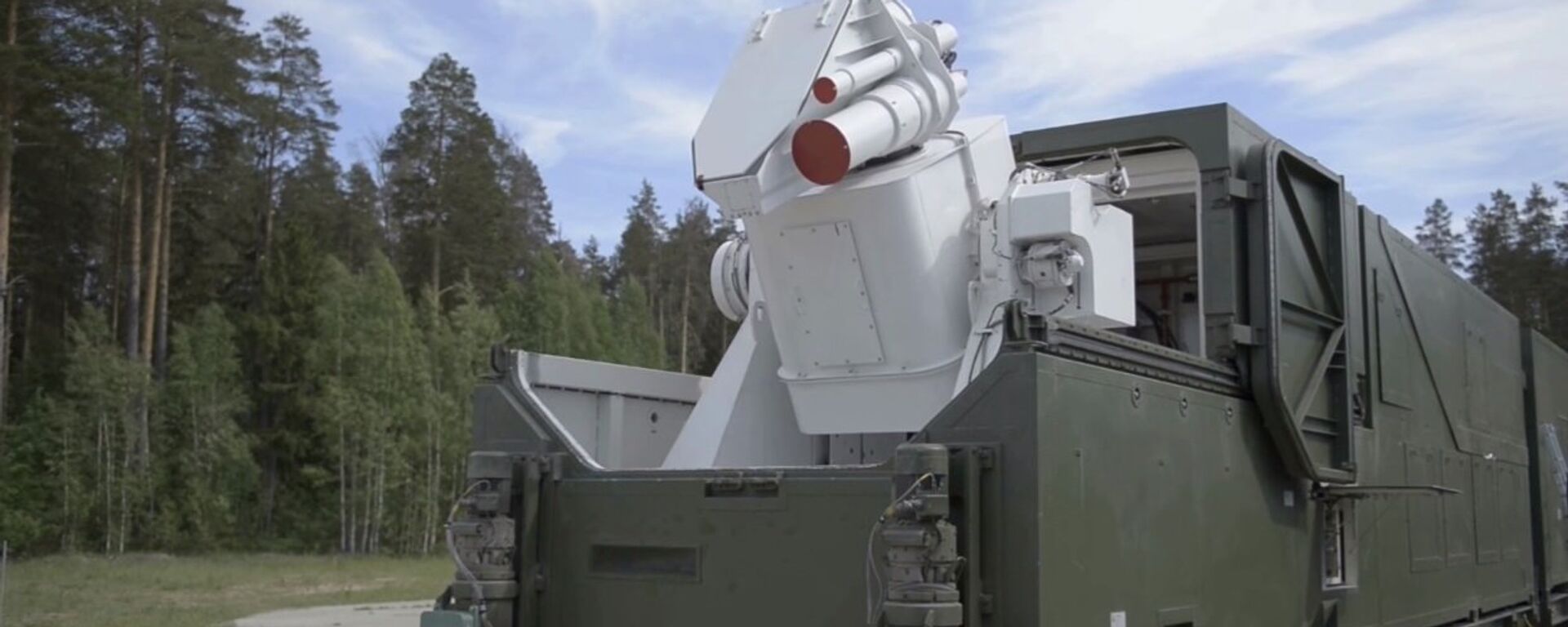
21 September 2023, 20:22 GMT
A laser, which stands for "Light Amplification by Stimulated Emission of Radiation," is a device that produces a highly concentrated, coherent, and monochromatic beam of light. This is achieved through a process known as stimulated emission. Through current-induced excitation, photons or light particles generate energy in the form of concentrated light. This concentrated light merges into a defined beam, thereby giving rise to the phenomenon known as a laser beam.
Science Behind Laser Weapons
In light emission, lasers hold a unique status as an artificial innovation. In stark contrast to naturally occurring light sources, the source of lasers lies in human-engineered processes. The hallmark of lasers lies in their capacity to project a tightly focused beam of light, characterized by a striking uniformity in wavelength among all constituent waves.
Laser technology encompasses a diverse range of mediums, which can be characterized as solid, liquid, or gaseous. In high-energy laser applications, molecular gases are often the medium of choice.
At the core of laser functionality lies the synchronized propagation of light waves, wherein their peaks harmoniously align. This fundamental trait underpins the extraordinary qualities of laser beams: their exceptional narrowness, luminosity, and the ability to focus precisely on a minute area.
A laser is distinguished by its capacity to emit a concentrated stream of electromagnetic waves, displaying perfect alignment in frequency, phase, and directional trajectory – a state known as coherence. Fundamentally, the luminous potency of a laser is boundless, yet its actual capacity hinges on the dimensions of the laser apparatus and the intrinsic attributes of the medium from which the organized light emanates, according to former MIT nuclear physicist Kosta Tsipis.
The principle behind lasers lies in activating atoms to an elevated energy state. This state of heightened energy, known as "excitation," can be triggered by a brief exposure to light, controlled atom collisions, or the infusion of an electrical charge.
When an atom at a "ground state" (low energy level) absorbs a substantial amount of energy, it enters an "excited state" (high energy level). Once excited, atoms naturally revert to their lower-energy ground state. This transition releases excess energy in the form of a photon, which is a fundamental unit of light.
By directing additional energy towards an already stimulated atom, it reverts to a lower-energy state, emitting two identical photons characterized by matching color, energy level, and trajectory.
A laser's functionality is intricately linked to the unique interplay between photons and matter. When a photon released by one excited molecule collides with another molecule in the same excited state, the second molecule can emit an additional photon with matching phase and frequency. This sets off a chain reaction, as both photons trigger similar emissions from other molecules. This leads to a rapid increase in identical photons moving through the collection of molecules.
Components of a Laser Weapon
"Stimulated emission" serves as the mainstay of laser operation. To develop the requisite essentials for this phenomenon, lasers encompass three vital functional components, each playing a crucial role in their overall design. These include:
A
gain medium is a crucial part of how lasers work. This is when a material gives some of its energy to the light it produces, making the light stronger. This idea is at the core of laser technology. Simply put, gain measures how good a material is at making light more powerful in a laser.
Categories of Gain Medium
Gain Medium | Typical Examples |
Gas | Carbon dioxide (CO2), excimer, argon-ion, helium-neon |
Liquid | Fluorescent dye |
Doped Solid-state Crystals | YAG (Nd:YAG), vanadate (Nd:YVO4), titanium:sapphire (Ti:S), Yb:glass |
Doped Optical Fibers | Er-doped fiber, Yb-glass fiber |
Semiconductor Diode | Diode laser, optically pumped semiconductor laser (OPSL), vertical cavity surface-emitting laser (VCSEL) |
Free-electrons | Free-electron laser (FEL) |
The
pump source, or
laser pumping, is the process of transferring energy from an external source into the gain medium. This energy is then absorbed by the medium, causing the atoms within it to become excited.
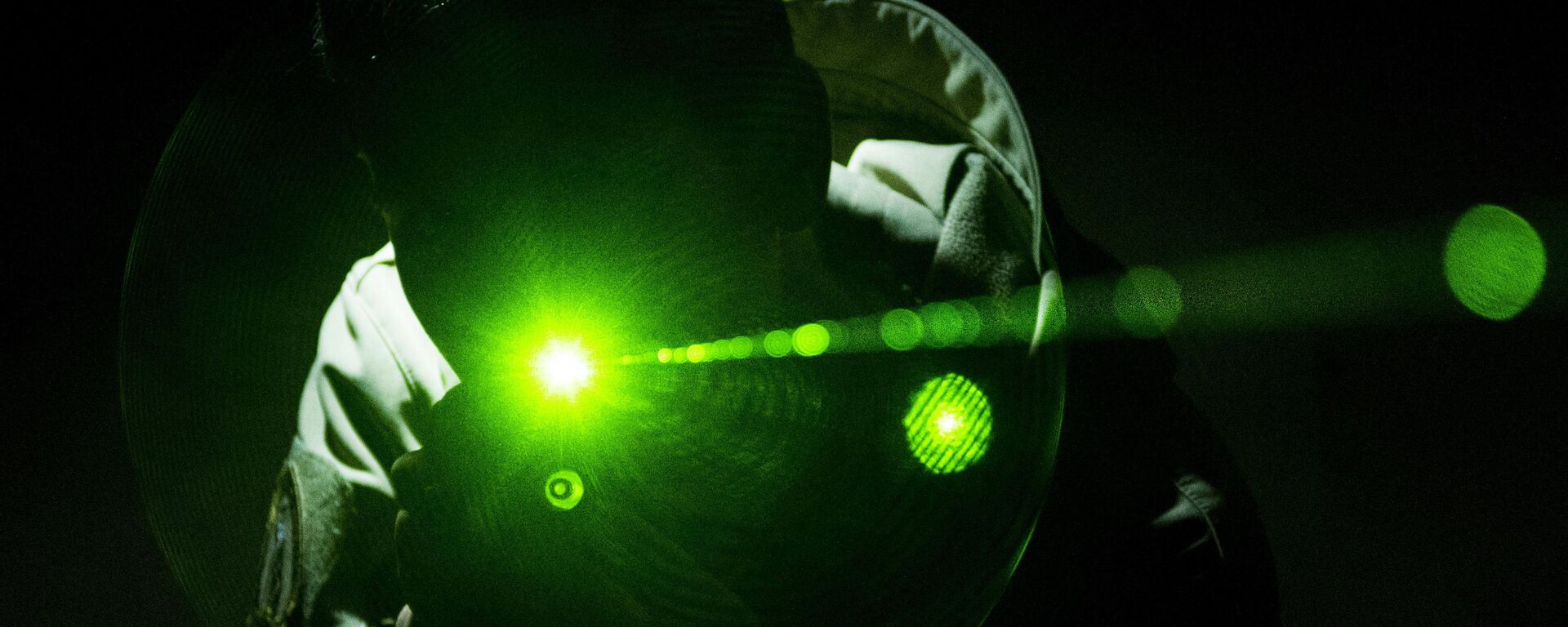
26 August 2023, 05:03 GMT
Categories of Laser Pumping
Laser Type | Typical Pump Sources |
Carbon Dioxide | Electrical discharge |
Diode | Electrical current (diode laser), diode laser (OPSL, VCSEL) |
Excimer | Electrical discharge |
Fiber | Diode laser |
Ion | Electrical discharge |
Solid-State | Flash lamp, diode laser |
Titanium:Sapphire | Solid-state (Nd:YVO4) laser, OPSL |
A
resonant cavity, also known as a resonator, makes light particles (photons) go through the gain medium many times before coming out of the laser. This is important to make the laser produce a strong beam of light, because each time the light passes through the gain medium, it gets a little stronger. There's one special kind of laser, called an excimer laser, that can make the light much stronger in just a few passes.
Laser Targeting and Tracking Systems
A laser targeting system guides a laser ray with unparalleled accuracy toward a predefined target. This feat is accomplished by seamlessly integrating sensors, optical components, and intricate computational algorithms, resulting in pinpoint accuracy.
Precision targeting and tracking systems constitute vital elements of laser weaponry. Their primary role lies in guaranteeing the accurate delivery of the laser beam to its assigned intent. Below is an in-depth explanation of the functioning of these mechanisms.
Sensor suites: Laser weapons are equipped with state-of-the-art sensor suites. These suites integrate optical, infrared, and possibly other sensor types to detect and keep tabs on potential targets. A laser sensor is an electrical instrument that employs a concentrated light beam to determine whether an object is present or absent, or to measure its distance.
Identifying a target: Within the sensor suite, incoming data undergoes rigorous analysis to pinpoint potential targets. This intricate process entails distinguishing between friendly, neutral, and hostile entities, taking into account factors such as shape, size, thermal traits, and movement.
Discriminating targets: Following the prospective target identification, the system undertakes the crucial task of distinguishing between them to accurately select the intended entity. This task utilizes algorithms that measure threat level, priority, and the legal standing per marked target.
Tracking algorithms: Sophisticated algorithms sort data from the sensors to discern a target's future position. This is crucial for moving targets.
Range determination: Laser weapons use range-finding systems to determine the distance between the weapon and the target. This critical data forms the bedrock for calculating the optimal power level requisite to accurately engage the target.
Gimbal systems allow the laser weapon to make dynamic adjustments in orientation, ensuring effective tracking of targets in horizontal, vertical, and occasionally lateral dimensions.
Inertial measurement units (IMUs) steadily feed the laser weapon with the position and orientation in three-dimensional space, which is used to modify the weapon's aim in real-time.
Stabilization systems counteract any motion or shaking occurring in the platform where the laser weapon is fitted, such as a ship or aircraft. Their primary purpose is to ensure a stable and unbroken line of sight directed at the target.
Predictive tracking algorithms predict the coming motions of a target based on its current trajectory. This allows the weapon to adjust its aim to ensure a successful hit proactively.
Characteristics of a Laser
Lasers now stand as essential instruments across a wide array of applications. Their working principles and structure provide laser beam attributes that stand unpaired by any other technology.
Key Attributes of a Laser
Attributes | Description | Uses |
Coherence | The outcome of stimulated emission is a collection of photons perfectly synchronized in phase, a phenomenon known as "coherence." This essential quality grants laser rays the capacity to produce well-defined interference fringe patterns. | Holography, interferometric fiber optic gyros (IFOGs), interferometry, optical coherence tomography (OCT). |
Focus | The synergy between stimulated emission and the distinctive features of laser resonators typically produces a sharply focused beam that exhibits minimal dispersion over long distances. | Cinema and light show laser projectors, free-space terrestrial and spaceborne telecommunications, targeting and tracking. |
High Intensity | Through effective concentration and precise focusing, laser light can attain remarkable intensity, consolidating all its power into a small, defined point. | Cutting, marking, welding, and heat treating, laser fusion, laser induced breakdown spectroscopy, lithotripsy and other surgical uses. |
Homogeneous Color | The process of stimulated emission generates photons that possess either a single wavelength or an exceptionally tight range of wavelengths. | Cinema and light show laser projectors, flow cytometry, laser microscopy, spectroscopy, telecommunications. |
Laser technology is widely portrayed as a potent tool, often envisioned as emanating from a handheld laser gun capable of obliterating enemy forces and military hardware during combat operations, leveling buildings, etc. In practical terms, lasers are instruments with numerous military applications and the potential for terminal use. Yet it's imperative to understand that lasers do have defined impediments.
The main thing that decides what features a laser system needs is the effect it is supposed to have on the target. How well the laser weapon works on a particular target affects how one makes and uses cost-effective weapons for military application.
The responsiveness of the target to laser beams is the primary determinant in selecting between a low-energy and high-energy laser weapon system. In cases where the target exhibits ample responsiveness to lower energy levels within a broad spectrum band, it lays the foundation for the design and scalable production of an economically feasible laser weapon. The imperative for high energy levels markedly reduces the potential for crafting a usable and budget-friendly laser weapon.
Hence, the efficacy of a laser beam in inducing mechanical harm hinges on factors such as pulse duration, beam power, atmospheric pressure, wavelength, composition, and the target’s surface texture.
When considering military applications, the high-energy laser emerges as the favored choice, due to its distinctive strategic advantages. These encompass the capacity to hollow out metal plates of considerable thickness, its propagation at the speed of light (about 300 million meters per second) - leaving no room for evasion or interception, and its aptitude for neutralizing enemy air defense systems, as well as providing an impervious defense against cruise missile threats by determining the precise position of a target missile within a range equivalent to its shortest dimension demands an equally exact alignment of the laser.
Precision in penetrating the metallic exterior of an aircraft necessitates an approximate energy output of 700 joules per square centimeter (J/cm2). It is pivotal to underscore that creating an aperture in the aircraft's hull may not yield the desired result of in-air incapacitation or a catastrophic crash. A more practical estimate for the requisite energy level to disable an aircraft would range from five to ten times higher, mandating a delivery of no less than 5,000 to 10,000 J/cm2 by a proficient high-energy laser weapon onto the designated target. Moreover, it is pertinent to note that an HEL weapon has the potential to initiate an explosion within the ammunition carried by an assailant in flight.
High-Energy Laser (HEL) Weapon Concepts
Ground-based laser (GBL) weapon systems are military technologies that use powerful lasers mounted on land-based platforms to engage and potentially destroy or disable targets. These systems utilize focused beams of light to deliver energy over long distances, with the intent of causing damage to or neutralizing enemy assets.
GBL systems have been a subject of research and development by various military establishments worldwide. They have been tested in multiple capacities for missile defense, anti-drone systems, and potential use against ground-based targets. However, technological advancements have led to further developments in this field.
Notable Examples of Ground-Based Laser Weapon Systems
GBL Weapon System | Developed By | Description |
Peresvet | Russia | Peresvet is a Russian laser weapon system designed to be mounted on ground-based platforms and is reportedly capable of targeting satellites and unmanned aerial vehicles. |
ATHENA (Advanced Test High Energy Asset) | Lockheed Martin, USA | ATHENA is designed to disable or destroy fixed-wing and rotatory drones, unmanned aerial systems, and low-value threats such as improvised small boats, rockets, trucks, etc. |
Iron Beam | Rafael Advanced Defense Systems Ltd., Israel | Iron Beam is a short-range air defense system that uses a high-energy laser to intercept and destroy airborne threats such as drones, rockets, and mortar shells. It is part of Israel's multi-layered missile defense system. |
Sources: 1Wikipedia 2Air Force Technology, 3Rafael Advanced Defense Systems Ltd.
Sea-based laser (SBL) weapon systems stand as a testament to contemporary military advancement, utilizing high-powered lasers on maritime military equipment like ships and submarines. Their primary objective is to engage and, if required, incapacitate or neutralize targets at sea or within the aerial sphere.
Sea-based laser systems are typically designed to address threats specific to maritime environments, such as hostile aircraft, drones, small boats, and potentially even incoming missiles. They can enhance a ship's defensive capabilities and contribute to layered maritime defense strategies.
Notable Examples of Sea-Based Laser Weapon Systems
SBL Weapon System | Developed By | Description |
LaWS (Laser Weapon System) | United States Navy | LaWS was initially deployed on the USS Ponce (AFSB(I)-15) in 2014 for operational testing. It is a directed-energy weapon designed to target and neutralize aerial threats such as drones, helicopters, and small boats. |
HELIOS (High Energy Laser with Integrated Optical-dazzler and Surveillance) | Lockheed Martin, USA | HELIOS is a high-energy laser system designed to integrate into naval vessels. It combines a high-energy laser with an integrated optical dazzler and surveillance system for enhanced maritime defense. |
Navy Laser Weapon System Demonstrator (LWSD) | Northrop Grumman, USA | The LWSD is built to be deployed on US Navy vessels. It's part of the US Navy's initiative to develop and deploy directed-energy weapons for shipboard defense. |
Sources: 1Wired.com, 2Lockheed Martin, 3Globalsecurity.org
Airborne laser (ABL) weapon systems exemplify cutting-edge military capabilities, deploying high-powered lasers on airborne platforms like aircraft and drones. Their primary objective is to engage and, if required, incapacitate targets in both aerial and ground-based settings.
Air-based laser systems were invented to decimate airborne threats, encompassing enemy aircraft, drones, and potentially even ballistic missiles. These systems are vital to defense strategies amid multifaceted and evolving operational contexts.
Notable Examples of Air-Based Laser Weapon Systems
ABL Weapon System | Developed By | Description |
High Energy Liquid Laser Area Defense System (HELLADS) Program | Defense Advanced Research Projects Agency (DARPA), USA | HELLADS is produced to be a compact, high-energy laser for defense against aerial and ground-based threats. |
Airborne Laser System (ABL) YAL 1A | Boeing, USA | The YAL-1 ABL was a megawatt-class chemical oxygen iodine laser mounted on a modified Boeing 747-400F aircraft. It was designed to shoot down ballistic missiles in their boost phase. The program was discontinued in 2011. |
IL-76MD-90A with A-60 Laser System | Russia | The A-60 is an experimental airborne laser system mounted on an IL-76MD-90A aircraft. It is designed to be used for anti-satellite purposes and missile defense. |
Sources: 1Air Force Technology 2MilitaryRussia.ru
Technical Challenges and Limitations of Laser Weapons
As a new technology adapted for military use, laser weapons possess challenges and limitations that limit their capability when deployed for military purposes.
Price Tag of Cutting-Edge Laser Systems Evolving laser technology demands substantial research, development, and comprehensive testing resources. Balancing innovation with fiscal prudence is crucial. Producing and maintaining laser weapons requires a significant financial commitment, potentially posing a barrier to their widespread implementation.
Addressing Energy Needs of High-Powered Lasers Harnessing the immense power needed for high-performance lasers poses a challenge to the energy infrastructure of carrying platforms. Engineers are striving to minimize waste heat and maximize energy conversion for optimal laser performance.
Imperative of Laser Medium Durability Ensuring that laser mediums, encompassing substances like specialized crystals or gases, remain resilient under the strain of high-intensity laser operation is paramount to sustained performance.
The atmosphere assimilates a significant proportion of a laser beam's energy. This absorption initiates a process where heated air expands, carving out a channel of lower air density. The inclination of light waves to deflect from hotter, less dense areas in a medium leads to beam divergence. This optical phenomenon, termed thermal blooming, frequently contributes to the defocusing and separating of laser beams in air. Also, adverse weather conditions like fog, rain, and snow can further attenuate or scatter the laser beam, making targeting difficult.
Complexity of Laser Weapon Validation Achieving accurate simulations of battlefield conditions for laser weapon testing is a complex endeavor that relies on sophisticated facilities and methodologies.
Role of Laser Weapons in Future Warfare
Laser weapons represent a transformative advancement in warfare, offering unparalleled precision in targeting and reducing collateral damage. They can serve as highly effective countermeasures against fast-moving threats like missiles and drones. Additionally, laser weapons could revolutionize anti-swarm tactics and enhance defenses for critical infrastructure. Their silent and invisible nature provides a stealth advantage, and their continuous engagement capability reduces logistical burdens.
Integration with AI and autonomous systems and adaptability for various roles further amplify their potential impact. While ongoing research and ethical considerations will shape their deployment, laser weapons are poised to influence warfare's future significantly.
